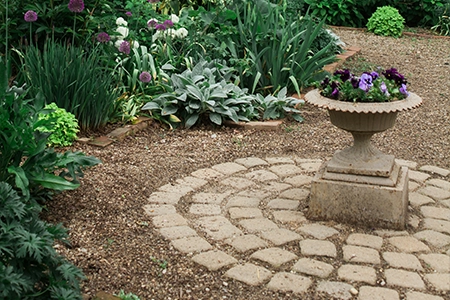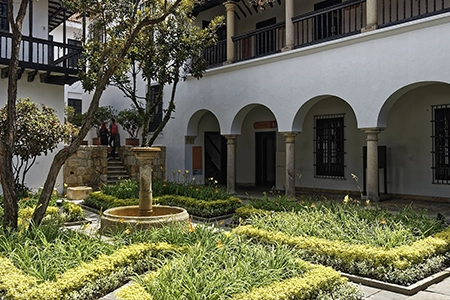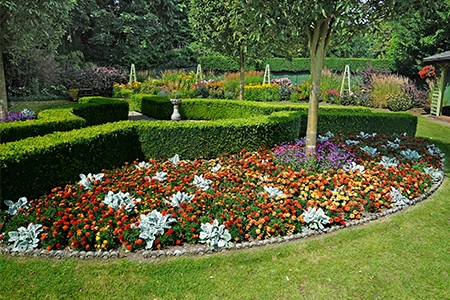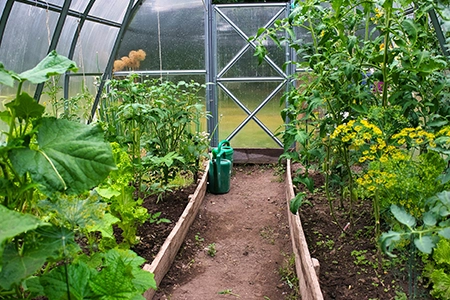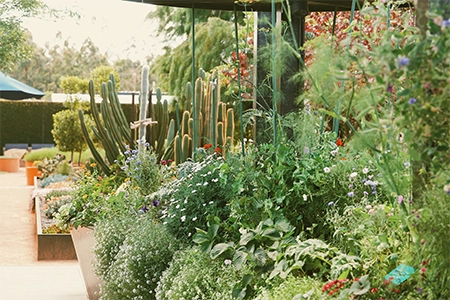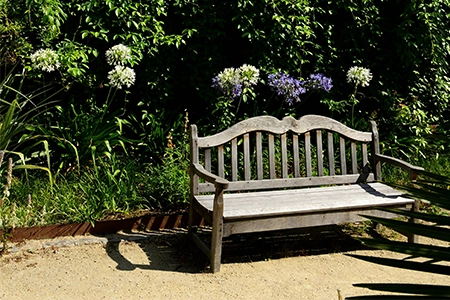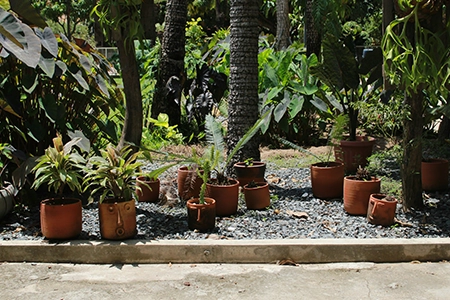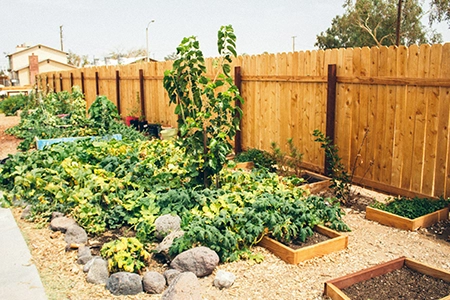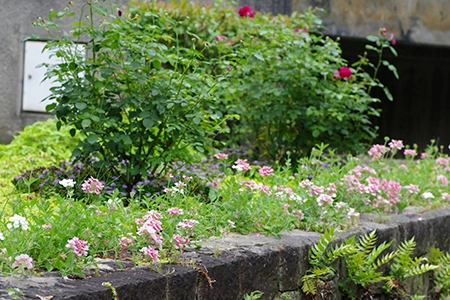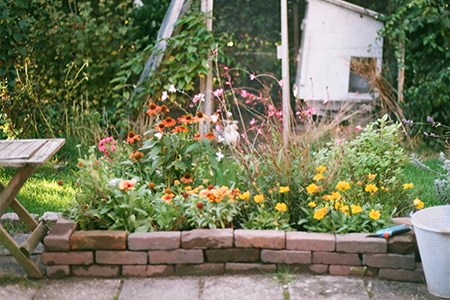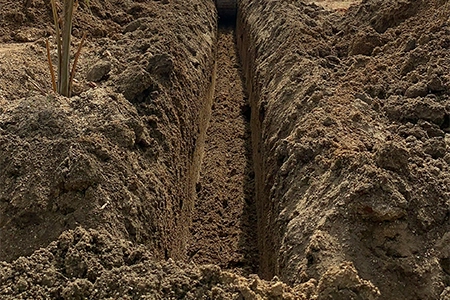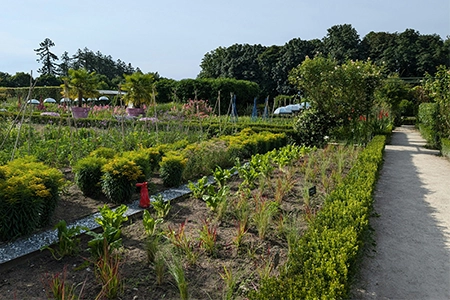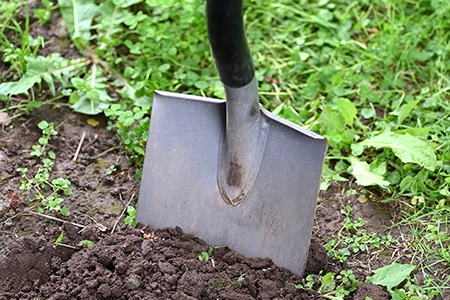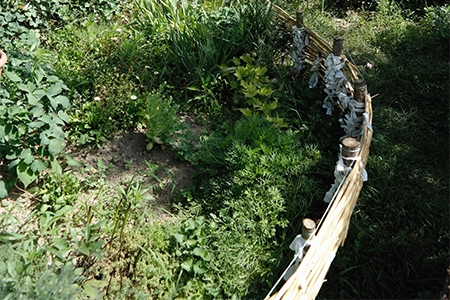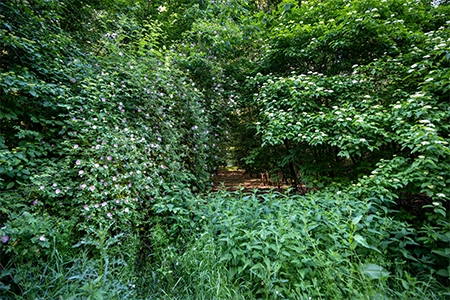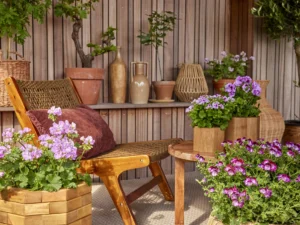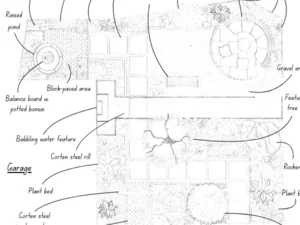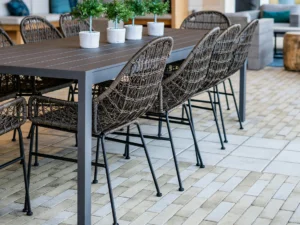A well-maintained garden is a thing of beauty, but nothing ruins its charm faster than untidy, floppy borders. Garden edging is an essential part of keeping your outdoor space looking polished, structured, and under control.
Whether you’re separating flower beds, defining pathways, or keeping your lawn in check, the right garden border edging ideas can elevate your garden to new levels of sophistication.
In this guide, we’ll explore the importance of garden edging, the different materials available, including metal garden edging, plastic garden edging, and corten steel edging and the best ways to install them for long-lasting results.
What is Lawn Edging and Why is it Important?
Lawn edging creates defined garden borders, prevents grass from invading flower beds, keeps pathways tidy, and enhances structure. Without it, gardens can quickly look messy and overgrown.
A crisp edge improves aesthetics, giving your garden a polished, intentional look. It also simplifies maintenance by reducing the need for constant trimming and weeding, saving you time and effort.
Edging prevents overgrowth, keeping grass and plants contained for a neat, organised appearance. Additionally, a well-maintained garden boosts property value, enhances curb appeal, and makes a great impression on potential buyers.
What Can Be Edged in a Garden?
Garden edging isn’t just for your lawn, it can be used in various areas to create structure and balance. Here are a few places where garden edging borders can make a big impact:
Lawn Edges
Lawn edging provides a clear boundary between your lawn and flower beds, pathways, or driveways, preventing grass from spreading into areas where it’s not wanted. It helps maintain a tidy, well-kept appearance while making it easier to mow along the edges, reducing the time and effort spent on maintaining your garden.
Flower Beds
A well-defined flower bed edge helps keep mulch, soil, and plants in place while giving the garden a structured, neat look. Flower bed edging prevents soil erosion, reduces the spread of invasive grass and weeds, and makes it easier to tend to plants. The separation created by edging also enhances the overall design, making flower beds stand out as an attractive feature.
Pathways & Driveways
Edging along pathways and driveways not only adds a stylish and refined touch but also helps to stop gravel, stones, or other loose materials from spilling into your garden. This practical feature ensures your paths remain clear and easy to walk on while also framing the entrance to your home with clean lines that complement your overall landscaping design.
Vegetable Gardens
Lawn edging around vegetable gardens creates a defined planting area that not only helps to keep your vegetables contained but also reduces the risk of weeds encroaching on your garden beds. The barrier keeps soil and mulch in place, enhances drainage, and ensures that your plants get the right amount of space to grow without being crowded by surrounding grass or invasive plants.
Patios & Decking
Installing edging around patios and decking creates a sleek, modern finish that frames outdoor seating areas, helping to establish a clear separation between hardscaping and landscaping features. It enhances the appearance of your patio or deck, keeps gravel or mulch contained, and can also act as a barrier to prevent plants from growing too close to the edges, ensuring a tidy look year-round.
Different Types of Lawn Edging
There are many materials to choose from when it comes to garden border edging ideas. Here are some of the most popular options:
- Metal Garden Edging
- Plastic Garden Edging
- Wood Edging
- Stone Edging
- Rock Edging
- Block Edging
Metal Garden Edging
Metal garden edging, is made from thin strips of materials like aluminum, steel, or corten steel, the latter of which naturally develops a rusted patina over time, adding a unique, weathered appearance to the landscape.
This type of edging is particularly popular in modern gardens as it can create sleek, minimalistic borders that enhance the overall aesthetic. While it is durable, contemporary and long-lasting, it can be relatively expensive, with prices varying depending on the type of metal used.
Corten steel edging is particularly expensive although it will give your garden that extra wow factor if used as lawn edging. Additionally, installation requires some skill to ensure it is properly set up, which may add to the overall cost and complexity of the project.
Plastic Garden Edging
Flexible plastic edging consists of strips or rolls of plastic designed for easy installation, making it an ideal choice for creating curved garden beds and providing a budget-friendly landscaping solution.
This low-cost option is highly versatile and easy to install, offering a quick way to define borders and enhance garden design. However, while it is affordable and practical, its durability is a concern as plastic edging can become brittle and degrade over time, especially when exposed to harsh weather conditions.
Plastic lawn edging can also be harmful to the environment as it is often made from non-biodegradable materials that can contribute to plastic pollution if not disposed of properly.
Wood Edging
Wooden edging consists of planks or logs used to define garden borders, offering a natural and rustic aesthetic that blends seamlessly with outdoor landscapes. Ideal for creating a more organic look, it provides a charming, earthy appeal.
While it falls within a mid-range price point, the cost can vary depending on the type of wood used. However, wooden edging is susceptible to rot and weathering over time, meaning it requires regular maintenance to keep it looking its best and to extend its lifespan.
It can also be difficult to construct curves with this material, but wood edging can be an ideal choice for those looking to create a more robust and rustic feel within their garden.
Rock Edging
Natural rocks or boulders are often used to create garden borders, adding a rugged, organic feel that enhances the overall landscape. These stones can be visually striking and are highly durable, making them a long-lasting choice for edging.
The cost can vary significantly, with the option of sourcing rocks naturally potentially making it a free material. One downside is that rocks and boulders can be heavy, making them challenging to move and install, requiring more effort and possibly professional assistance.
However, if you’re looking to bring a coastal feel to your garden, rock edging may be the perfect material for you. Furthermore, rock edging can also include smaller pebbles, which are easy to import and install and can provide a more delicate coastal feel.
Stone Edging
Cut stone is often used to frame garden areas, offering a timeless and versatile option that suits both traditional and modern garden styles. While this material is aesthetically pleasing and extremely durable, it comes with a higher cost due to the price of the materials and the need for professional installation.
This added expense can make stone edging a more costly choice, but the long-lasting beauty and strength it provides can make the investment worthwhile. Stone edging is highly versatile, offering a range of patterns and structures, such as bullnose stone edging, which features rounded edges and is a great choice for those trying to incorporate a more formal Victorian style into their garden.
Block Paver Edging
Block paver edging consists of interlocking concrete or stone blocks used to frame garden areas, offering a versatile and attractive solution for defining borders. This type of edging works well in both traditional and contemporary garden designs, providing a clean, structured look.
While block paver edging tends to be more affordable than cut stone or bricks, the cost can still be moderate due to the material and installation. It is durable, low-maintenance, and provides a neat, uniform appearance, but installation may require some skill to ensure the blocks are properly aligned and level, making it more labour-intensive compared to simpler edging options.
Another benefit of block paver edging is its ability to easily adapt to curves and corners, allowing for flexible design options that create smooth, flowing lines in garden layouts.
Installation Methods for Garden Edging
The installation process for lawn edging varies depending on the material you choose, with each type requiring a different approach. Understanding the best methods for each material ensures a smooth installation and a durable, attractive result. Below, we’ve outlined some of the most common methods used for installing various types of lawn edging, along with a quick tutorial to help you through the process for each material.
Hammer-in Spikes
Many plastic and metal garden edging options are designed with built-in spikes that allow for easy installation by simply hammering them into the ground with a mallet. This method is quick and efficient, providing a firm hold without the need for additional tools or complicated steps. It’s especially suitable for lighter materials, and the spikes help keep the edging in place, preventing it from shifting over time. This installation method is particularly useful for straight lines or gentle curves.
Fixed Stone Installation
When installing stone or block edging, it’s often necessary to cement the materials in place to ensure long-term stability and durability. This method involves digging a trench to fit the stones or blocks, followed by placing them in position and securing them with mortar or cement. Fixed stone installation provides a more permanent and robust edging solution, especially for larger gardens or areas where the edging will bear weight or be subject to frequent use. This installation can be time-consuming but results in a sturdy, lasting finish.
Digging a Trench
For some garden edging materials, such as certain wooden, stone, or metal options, it’s necessary to dig a shallow trench to properly anchor the edging. This trench helps create a secure foundation for the edging, preventing it from shifting or becoming uneven. The depth and width of the trench will vary depending on the material used and the desired height of the edging, but this method provides excellent stability and ensures that the edging remains in place, even through weather changes.
Flexible Roll Installation
Plastic garden edging often comes in long rolls that can be bent to follow the contours of your garden’s layout. Flexible roll installation allows for easy customisation to create smooth, curved lines around flower beds, lawns, or pathways. The rolls are typically anchored into the ground using stakes or pins, making the installation process relatively simple and fast. This method is especially effective for gardens with irregular or curved borders, offering versatility and an attractive finish without the need for cutting or shaping materials.
Bolt & Fixing Method
Some wooden and metal edging options require bolts, screws, or brackets to secure them firmly in place. This method is often used for heavier materials or when a more structured, rigid edging is desired. The bolts or brackets are inserted through pre-drilled holes in the edging and into the ground or wooden posts to hold everything in position. This installation method offers added stability and is ideal for larger, more permanent edging projects where the material needs to withstand pressure or shifting.
How to Edge a Lawn Using a Garden Edging Tool
Preparing and edging your lawn before installing any garden edging is essential, but if you prefer not to install edging, simply shaping your lawn with a clean, defined border using a lawn edging tool can still create a tidy and organised appearance. A garden edging tool is essential for creating clean, sharp lines in your lawn. Here’s a step-by-step guide on how to use it effectively:
Mark Your Edge
Begin by using a garden hose or string to outline the desired location of your garden’s edge. This will help you visualise the shape and ensure straight or curved lines as per your preference.
Cut Into the Soil
Position your garden edging tool at a slight angle and push it into the ground along your marked line. This will create a defined trench along the edge of your lawn or garden bed, creating a clear separation between different areas.
Remove Excess Turf
Lift out any grass or soil from the trench you’ve created. Removing excess turf ensures a clean, neat finish, allowing the edging material to sit flush against the ground.
Install Your Edging Material
Place your chosen edging material—whether it is plastic, metal, stone, or another option—into the trench you’ve prepared. Ensure that the edging fits snugly and properly aligned.
Secure & Backfill
Finally, use soil or pebbles to secure the edging in place. Backfill around the edging to ensure it remains level and firm, preventing it from shifting over time. This step helps to lock the edging in place for a durable, long-lasting finish.
The Consequences of a Floppy Border
Neglecting your garden’s edges can lead to several problems that affect both the appearance and upkeep of your outdoor space. Over time, grass and weeds will quickly creep into flower beds, disrupting the design and spreading uncontrollably.
Additionally, a garden without clearly defined edges can appear messy and chaotic, giving an unkempt look that detracts from the overall aesthetic. Without proper boundaries, maintaining a tidy garden becomes more challenging and time-consuming.
Without a solid lawn edging solution, the maintenance required to keep your garden looking neat increases significantly. As the edges between different areas become blurred, you’ll find yourself spending more time trimming and tidying.
Furthermore, loose soil can spill into pathways or onto other surfaces, leading to soil erosion and making the garden look untidy and more challenging to maintain. A well-defined garden edge prevents these issues and creates a more organised and manageable space.
Conclusion
Getting your edges in shape is one of the simplest ways to transform your garden from unruly to refined. Whether you opt for metal garden edging, plastic garden edging, or natural stone, choosing the right method and material can make all the difference. A well-edged garden is not only visually appealing but also easier to maintain. So, don’t let floppy borders ruin your outdoor space; invest in quality garden border edging ideas today!
Ready to take control of your garden’s edges? Explore different options and start shaping up your outdoor space today.

